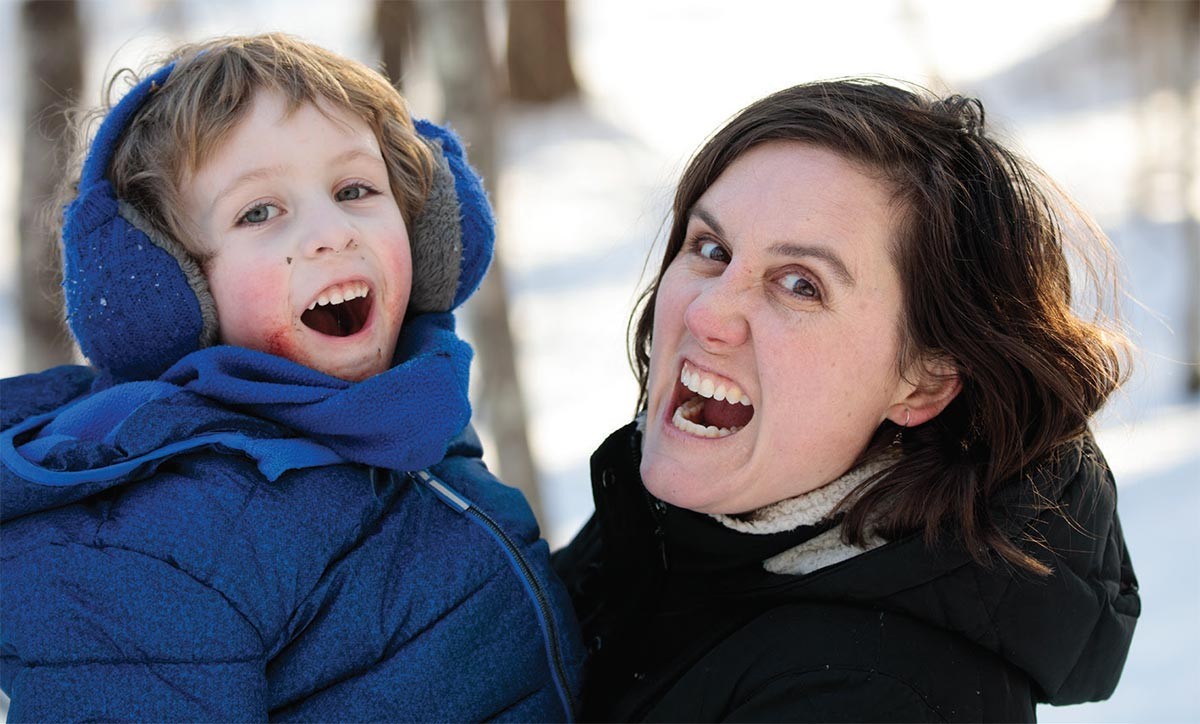Above our field, the land dips and rises, and in the fold there’s a vernal pool. It’s well shaded and slow to thaw, and this time of year, it serves as the family rink. The kids take running starts and slide so fast and far that sometimes, they crash into the hummock in the middle. Sometimes, they hit rotten ice and break through, soaking pants and filling boots with dark, foul-smelling tea.
This photograph was taken two years ago this March. Moments earlier, my son Turner had fallen face-down in a high-speed belly flop. The ice rubbed his chin raw. Blood dripped down his neck.
Did he cry? Run back down the hill? Not my feral child. He rose up and roared. Rose up – grinning, bloody – and roared. Soon, I was roaring with him. And thought: something is going very right.
Forests and people endure frequent hardships, from chin scrapes to great losses. Winters batter us down. Yet here we are again, roaring like March lions, voices crying out from our not-so-wild northern wilderness. Spring is coming. Prepare the way.
Fitting for the season, this issue has many references to the young and the new. Design students in Boston build a table and in the process, learn about forestry and the beauty of local wood. A “lumberjill” triumphs in Boonville, New York and reminisces about her own Vermont wild-child days. Seventh-graders in Killingly, Connecticut – the subjects of the fourth and last film in our Resilient Forest series – collect tree data as part of a Harvard Forest program. Meanwhile, at the University of Maine, faculty and students race to scrape the sky with cross-laminated timber.
The past becomes present. For the thirty-third consecutive year, David Carroll tromps out to the wetlands on the first day of open water and records the first turtle. Tom Seeley rehabilitates a 1908 bee lining technique (minus the pesky explosions). Joe Rankin reminds us that to define forest resilience, you must also define time-scale; decades after an old farm has returned to forest, wildflowers are creeping back. Resilience also comes from diversity: in a stand, across a landscape, through manage¬ment objectives. Bill Keeton describes new ways to promote old-growth characteristics. The Maine Forest Service shows how to regenerate aspen to create young forest habitat.
Also new: names on our masthead. I’m delighted to welcome Meghan McCarthy McPhaul, a long-term contributor to these pages, as our assistant editor. Dee Gish and Nancy Farwell – respectively, our accountant/bookkeeper and circulation and ad sales coordinator – have brightened the office since the first day they entered it. Finally, not yet on the masthead but soon to arrive: Cheryl Daigle is stepping in as editor. There’ll be time for Cheryl to introduce herself in the summer magazine; for now, I’ll note that her forest knowledge and experience extend from Connecticut to Maine, and she brings with her a passion for writing, the woods, and this region’s people. In other words, she’s a great fit for Northern Woodlands!
Thank you for supporting our nonprofit’s work. Enjoy the spring.


